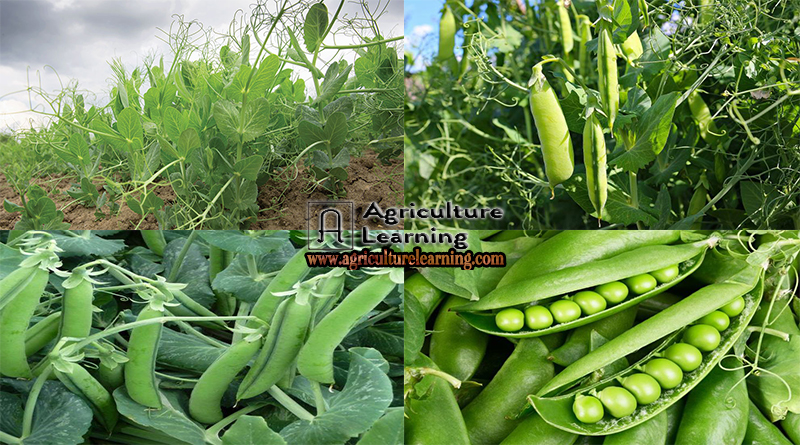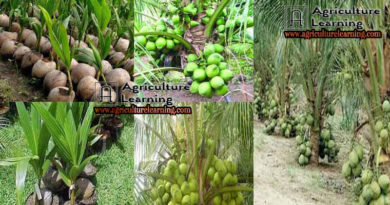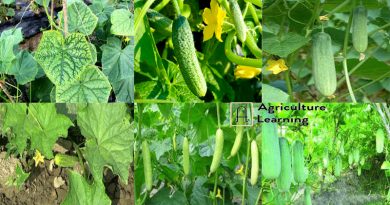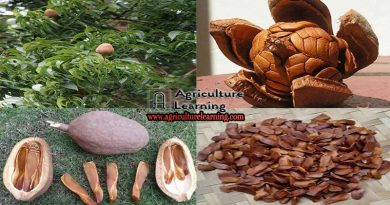Green peas farming information and it’s health benefits
Green pea or Garden Pea (Pisum sativum L.) is one of the most important winter vegetable crops grown on commercial scale the world over. It belongs to “Leguminaceae” family. It is a cool season crop grown throughout the world. Green pods are used for vegetable purpose and dried peas are used as pulse. In most of the Asian countries, Peas are cooked as vegetables and use for soup preparation.
Green peas straw is good source of nutritional fodder for livestock. Farmers with good crop management practices can obtain excellent profits in pea farming. Green peas can also be grown in controlled environments such as greenhouse and polyhouse. In India it is cultivated in Himachal Pradesh, Madhya Pradesh, Rajasthan, Maharashtra, Punjab, Haryana, Karnataka and Bihar. It is rich source of proteins, amino acids and sugars. India is the second largest producer of pea in the world and accounts for 21 percent of the world production.
Top 10 Countries of Green Peas Production: China, India, France, USA, Kenya, Egypt, Algeria, UK, Morocco, Peru.
Cultivars (Varieties) of Green Peas: Peas have both low-growing and vining cultivars. There is early season, mid-season and late season cultivars depending on the maturity of pods. The most widely grown varieties are; Alaska, Thomas Laxton, Tom Thumb, Miragreen, Mr.Big, Homesteader, Serge, Wando, Green Arrow, Kelvedon Wonder, Sabre, Early Perfection, Bejar, Arket, Bonevilla, Jawahar, and Little Marvel.
In Bangladesh, The most grown varieties are Bari motorshuti-1, Bari motorshuti-2, bari motorshuti-3, Ipsa motorsuti-1, Ipsa motorsuti-2, Ipsa motorchuti-3 etc.
Soil: Green peas crop requires a well-drained loamy soil rich in organic matter. The ideal or optimum soil pH for best yield ranges from 6.0 to 7.5.
Climate Requirement: Pea is a cool season crop and thrives best at 12°C to 18°C. This crop can withstand low temperatures at the seedling stage. Green pea plants are sensitive to frost conditions. The germination of seeds takes place at 10°C soil temperature.
Propagation system: Propagation of pea crop is done by seed sowing.
Land Preparation: Prepare the land with country plough or tractor to bring the soil fine-tilth stage. Remove any weeds, previous crop remains from the field. Any nutrient or micronutrient deficiencies should be supplemented in the filed during the land preparation. Commercial growers of green peas should go for soil test to find out the fertility of the soil.
Seed Treatment : Seed treatment is important in any crop cultivation to prevent from seed borne diseases. Pea seeds should be treated with Thiram or Captan at 2 grams per 1 kg of seed to avoid seed borne diseases.
Planting Season, Seed Rate and Sowing method of green pea: Planting of peas is usually done in two seasons (February-March & October-November) in Asian agro-climatic conditions. However, they can be grown throughout the year in controlled environment like greenhouse or polyhouse. Seed rate depends on the cultivar grown. Generally, it takes about 30 to 35 kg seed per 1-hectare cultivation. When it comes to sowing, peas are generally sown by broad casting method. However, peas can be sown by dibbling method or even behind the plough. Seeds should be soaked in water for 24 hours for better germination percentage. For getting more yields, seeds can be treated with Rhizium culture. When it comes to plant spacing or seed sowing space, sow the seeds at 45 x 10 cm in line or use flatbed layout with spacing of 45 X 20 cm.
Irrigation in Green Peas Cultivation: Green peas crop requires light irrigation after sowing the seeds in the field. However, pre-sowing irrigation of filed is advised for proper seed germination. Subsequent irrigation should be given at critical stages like flowering and pod development. If the crop is grown on light and sandy soils, it requires frequent irrigation. However, dry climatic conditions and summer may force to have frequent irrigations. Generally, green peas require irrigation at an interval of 8 to 10 days. In winter crops, waterlogging should be avoided as it may cause seed rotting.
Manures and Fertilizers: Proper manure and timely application of fertilizers ensures optimum yield in any crop. Well-decomposed farm yard manure (FMY) of 25 tonnes per 1 hectare should be applied at the time of land preparation. 60 kg of “N”/ha, 70 kg of “P”/ha and 70 kg “K’/ha should be applied as basal and 60 kg of “N” should be applied after 1 month (30 days) of sowing.
Intercultural Operations: The following intercultural operations should be followed for quality and high yield of pea produce.
Weed Control: Though mechanical and chemical means of weed control is available for most of the crops, controlling weeds in pea field means of mechanical method is difficult task as the seeds are sown in rows with closed spacing. However, herbicides like simazine, propazine and atrazine (0.50 kg per acre) can be used to control the leaf weeds effectively. If you want to use growth regulators for high yield of pods, contact local horticulture department.
Trailing & Stalking: Use bamboo sticks to support the vines of peas when they are about 2 months old and spreading stage.
Pests and Diseases in Green Peas Cultivation: Pod borer and Aphids are main insect pests found in pea farming. Powdery mildew is the most commonly found diseases in green peas cultivation.
Pests
Pod borer: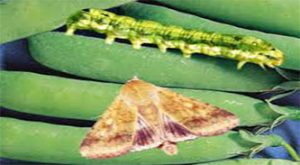
Control measures:
- For controlling pod borer spray Carbaryl 50 WP thrice at fortnightly intervals for controlling at the rate of 2 g/lit. Dust with carbaryl 10 D at the rate of 25 kg/ha.
Aphids: 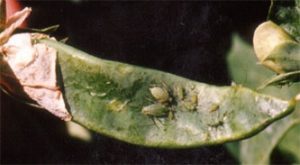
Control measure:
- For controlling aphids spray Methyl demeton 25 EC or Dimethoate 30 EC or Phosphamidon 40 SL @ 1 ml/lit of water.
Diseases
Powdery mildew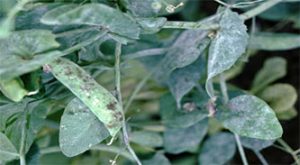
Control Measure:
- For controlling powdery mildew, spray Wettable sulphur 2 g/lit or dust Sulphur at 25 kg/ha or Dinocap 1 ml/lit or Tridemorph 0.5 ml/lit, three rounds at 15 days interval.
Harvesting: Peas can be harvested manually in 50 to 60 days, 75 days and 95 days according to early, mid-season and late season varieties. Go for 3 to 4 pickings within the interval of 2 to 12 days.
Yield in Green Peas Production: Yield of peas depends on many factors like cultivar (variety), soil, climate and crop management practices. Under ideal farming conditions, the following can be obtained.
- 25 to 45 Quintals/ha in early varieties.
- 50 to 60 Quintals/ha in mid-season varieties.
Health benefits:
- Green peas are good for bone health and prevent from arthritis and osteoporosis.
- Green peas improve immune strength.
- Green peas have anti-aging properties.
- Green peas help in regulating blood sugar.
- Green peas help in preventing from Alzheimer’s and bronchitis.
- Green peas help in weight management.
- Green peas help in stomach cancer prevention.
- Green peas are good for heart.
- Green peas help in preventing constipation.
- Green peas help in reducing bad cholesterol (LDL).
Nutritional Value: Pea is highly nutritive, containing high percentage of digestible proteins, carbohydrates, fats along with minerals (Ca, P and Mg) and vitamins A, B and C. High quality starch, protein, or oligoside isolates are being extracted from dry pea seeds. Because dry seeds contain little anti-nutritional factors, they are used as a protein source.
Source: Asia Farming

